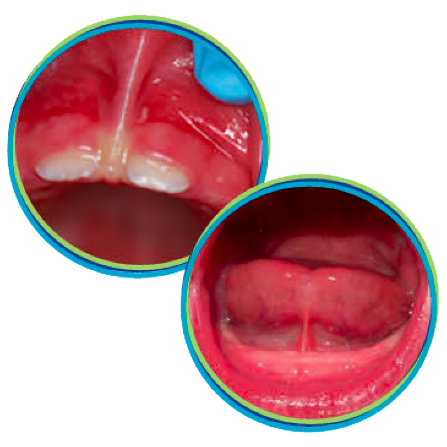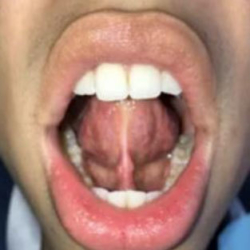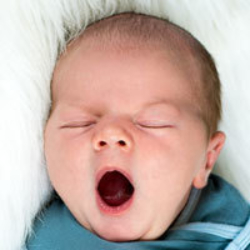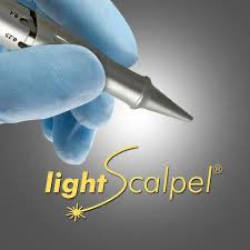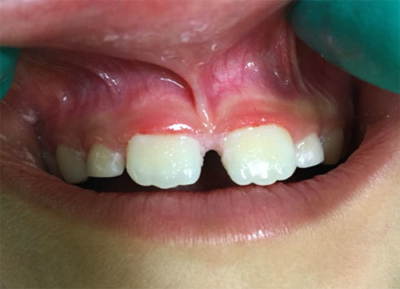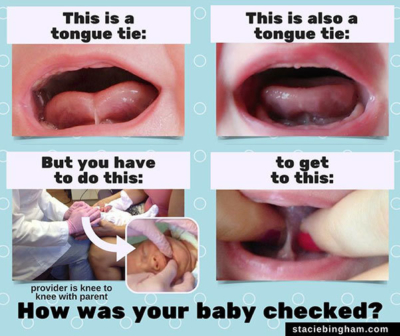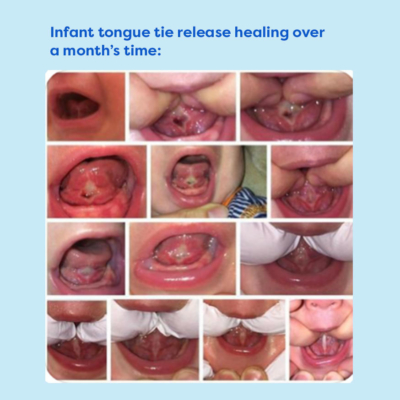What is a lip tie?
The piece of tissue behind your lip that connects it to the gum tissue is called the frenulum. When these membranes are too thick or too stiff, they can keep the lips from moving freely. This condition is called a lip tie. You can find this frenulum by pulling your child’s lip gently away from their gums. The connective tissue makes a “v” shape where it connects from the inside of the lip to the gum tissue right above, in front of, and/or between where the 2 front teeth are or will erupt. This tissue often blanches white and can be uncomfortable to the patient when tension is put on it. A lip tie can cause infant feeding issues, speech issues, a gap between the front teeth, recession of gum tissue, discomfort with and difficulty brushing, and demineralized/decayed/loss of tooth structure due to trapped food, drinks, plaque and bacteria.
Consequences of Untreated Lip Tie:
- A gap between the front teeth
-
Recession of the gums
- Trapped food, drinks, plaque, and bacteria
- Discomfort and difficulty with brushing teeth
- Demineralized and decayed tooth structure
- Loss of tooth structure and tooth loss
- Dental infections
Labial and Lingual Frenectomy Procedure
The procedure itself is relatively quick for each frenulum. The laser procedure is the preferred method of our doctors due to a more efficient revision as well as a lower probability of bleeding and healing back together too fast (reattachment).
For most children under the age of one, a swaddle wrap is used without sedation, and they are placed in our dental chair while being stabilized by an adult to minimize movement during the procedure. Eye protection is utilized. It is normal for the child to cry during the procedure because they are being swaddled and something is in their mouth other than food. Once the laser procedure is completed, the child is returned to the family to feed and review exercises/stretches.
In order to most appropriately manage both behavior and anxiety in a toddler through adolescent age range child, our doctors may suggest the use of conscious sedation or general anesthesia, which may require anesthesia personnel to be utilized. These methods of choice for behavior management allow for accuracy of the procedure and safety of your child by minimizing movement during the use of laser.
Topical numbing gel and/or local anesthesia may be used in conjunction with the laser procedure to manage discomfort where appropriate. Occasionally, sutures (stitches) may be placed to potentiate healing and prevent reattachment.
Pain Control
Discomfort may be experienced by some patients, especially during stretches, but usually diminishes quickly. Tylenol/Motrin can be alternated every 3 hours for pain if needed. It is recommended to take pain medicine 30 minutes prior to stretching. You may apply a small amount of coconut oil, homeopathic tincture, cold water, or breastmilk to your fingers before stretching. Cold items (such as popsicles or ice cubes) and frequent sips of cold water may help with inflammation and pain as well.
Healing
Within the first 24-48 hours after the procedure, a grayish-white patch will form in the area where the incision was made with the laser. This is the space that was created for improved lip movement. This is NOT infection or thrush. In about 2-4 weeks, the tissue will return to its normal appearance but will ideally not attach as closely or as tightly to the gum line. Slight puffiness of the lip is also normal since the lip had to be held and pulled to complete the procedure and there is inflammation in the site of the initial incision.
